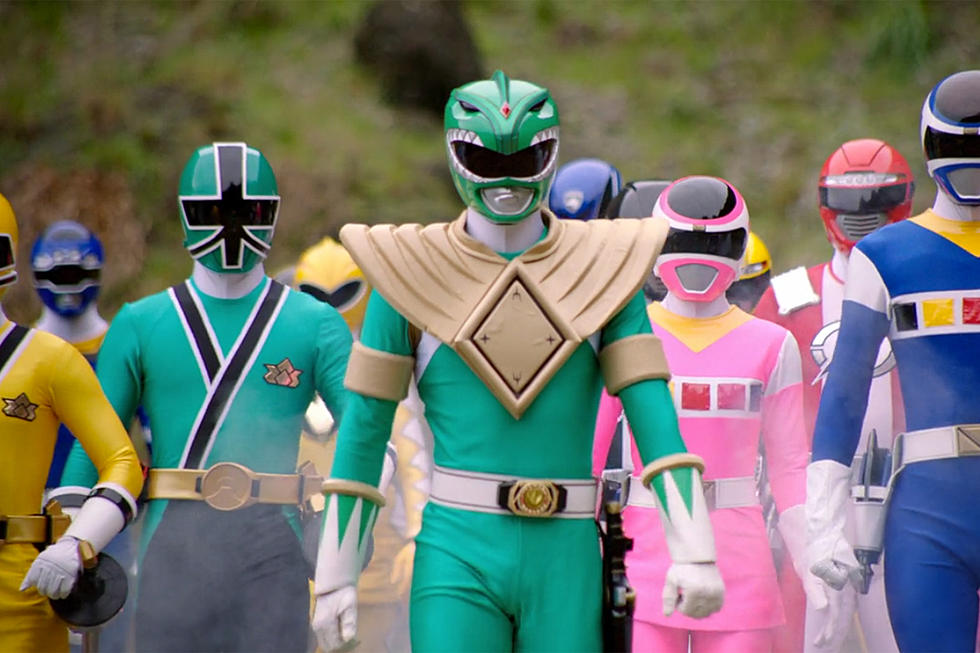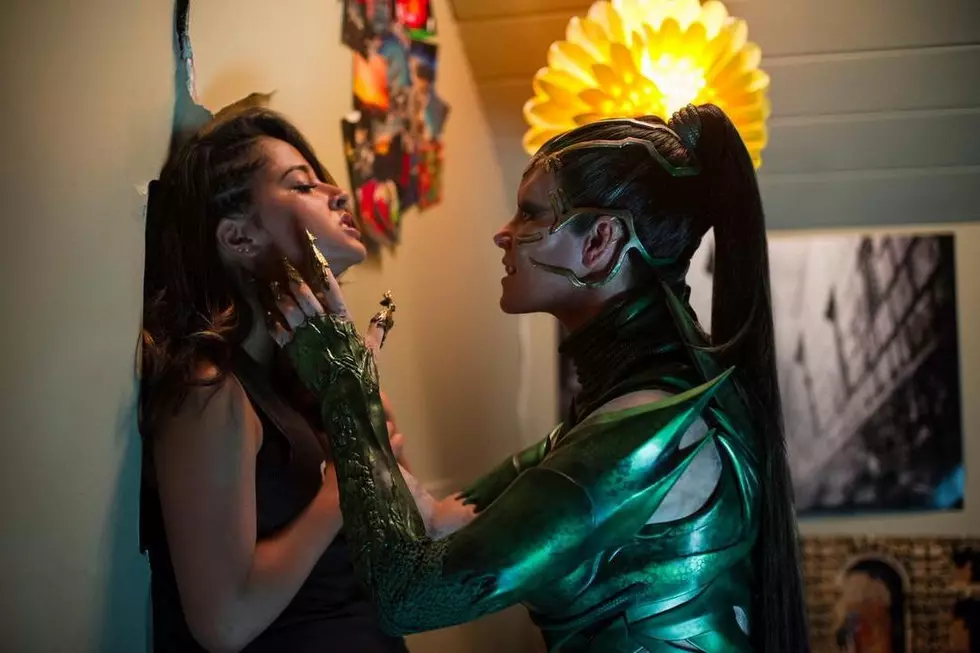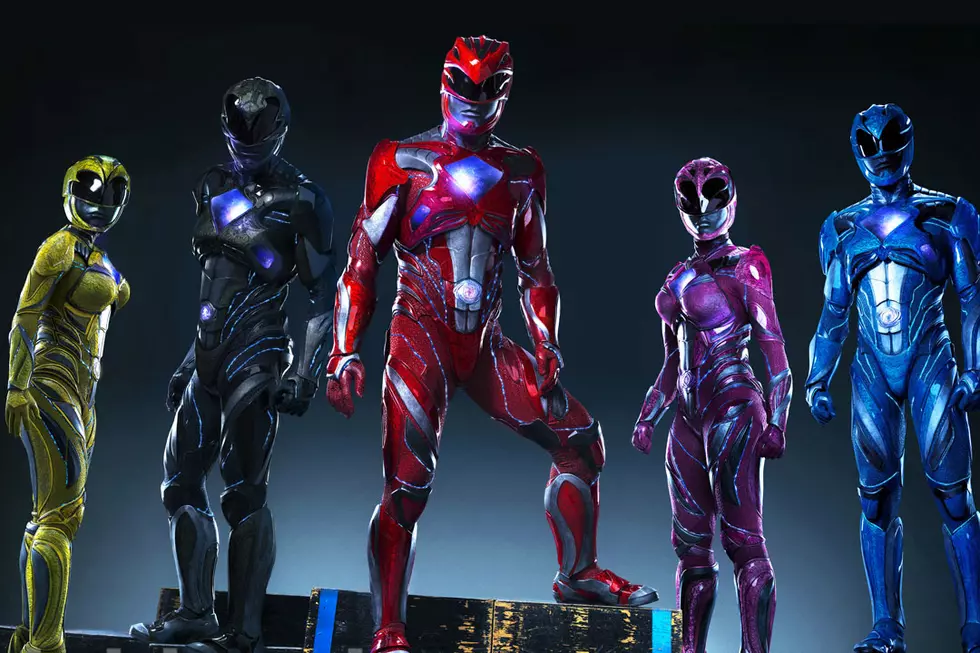
Ranger Station Interlude: ‘Hexagon,’ The Power Rangers Series That Never Was
With 800 episodes over the course of 22 years, the Power Rangers television show is arguably the single most successful live-action superhero franchise of all time, and certainly one of the strangest. Adapted from Japan's long-running Super Sentai series, created by manga legend Shotaro Ishinomori, the Power Rangers combined the giant robots and monsters of their Japanese counterpart with a completely different set of secret identities and problems, and became a pop cultural phenomenon. That's why we're looking back with an in-depth guide to Mighty Morphin Power Rangers, including its source material, Kyuoryu Sentai Zyuranger, in ComicsAlliance's Ranger Station!
This week, though, we're taking a break from the regular timeline for a look back at Hexagon, the Power Rangers series that would have tied the whole franchise together --- if it had ever actually happened.
Ever since I started writing this column and taking a weekly look back at the origins of Mighty Morphin Power Rangers --- heck, even before then, when I was making my way through the entire 800-episode run just for fun --- there's one Power Rangers topic that I'm asked about more than any other: Hexagon.
And honestly, it makes a lot of sense that it would come up --- it's the kind of alternate take that does pretty much everything superhero fans wanted, an idea that would've shifted Power Rangers into a format that was closer to its Super Sentai roots while simultaneously restructuring it into the kind of shared universe story that you see in western comics. It's an idea that ties it all together, introduces the theme of legacy, shifts the balance of power from the villains to the heroes and back again, and allows for growth, change and closure for characters that felt static from the moment they stepped onto the screen.
Or at least, that's what it would've done in theory. In practice, it never happened.
But because it never happened, it ended up becoming the ultimate "what if"; something that seems like a missed opportunity because we can all imagine it being as good as we wanted it to be, and that, in turn, makes it a lot of fun to talk about. So, since I've been asked recently --- and since I won't actually be getting to the point in the timeline where it would've happened for another eight years of this column --- we might as well talk about it now.
Hexagon is the name given to a pitch by Amit Bhaumik, story editor of Power Rangers Wild Force, for what would've been the 11th season of the series --- the season that ended up being the pretty much completely unrelated Power Rangers Ninja Storm instead. The thing is, it doesn't just emerge out of the ether between seasons. It actually starts a little earlier, with "Forever Red."
See, Wild Force, despite being a show that was pretty faithful to its Japanese counterpart, also marked the tenth anniversary of Power Rangers, and that was not an occasion that the producers were going to let pass without making a pretty big deal of it. The result was "Forever Red," an episode that reunited almost all of the previous seasons' Red Rangers --- even the ones who had lost their powers at the end of their own shows --- for one big adventure.
It's constructed almost entirely out of fan service, and the plot has more holes than a golf course, but honestly? That's not really a bad thing. More than anything else, it's fun, and even though there are things that are never explained and a couple of actors who never actually appear out of costume, it manages to hit that sweet spot of having just enough plot to get everything going, and not a single drop more. If, however, you're paying attention --- the kind of extremely close attention that you tend to get from people who obsess over Power Rangers --- you can see that they're laying the groundwork for something big.
Just look at Tommy, who was making his reappearance here after a few years, complete with a new haircut that has been gelled to within an inch of its life:
The plot is built around the idea that when the Earth is faced with a threat from the Rangers' past, Tommy is not only someone who gets called on to deal with it, he's also someone who can contact other Rangers and put together a team. And if that wasn't enough to recast him as a leader, he's also purposely written with lines that Zordon says in the first season --- although the fact that he doesn't tell anyone to behold the viewing globe is maybe the biggest missed opportunity of the past 23 years.
There's something else there, too, in that "Forever Red" was an attempt at reuniting Power Rangers into a single continuity. The first few seasons had been treated as, well, seasons, where the characters stayed the same and the show just found new excuses to give them new costumes and Zords. Later, though, they moved closer to the Super Sentai model of treating each series as its own distinct universe. You see a little crossover here and there --- because really, if you've got footage from the annual Sentai crossover movies, you should probably go ahead and use it --- but aside from that, there wasn't much acknowledgement that there was a new army of invading aliens every year.
This, incidentally, had the weird side effect of creating a universe where everyone just used "Power Ranger" like it was the generic term for "superhero" instead of referring to five very specific teenagers who drove robot dinosaurs around California. But anyway.
With all that in place, "Forever Red" ended with the idea that a) every team of Power Rangers exists in the same world, and b) Tommy is himself, if not in charge, at least aware enough of everyone that he can put together a team of past and present Rangers to deal with threats.
And that's how we get to Hexagon.
Bhaumik has written about the pitch himself if you want all the details, but the basic idea is that after a decade of Power Ranger teams operating independently, a secret government organization has been founded to unite them all as a single strike force: Hexagon, so named because it's one step above the Pentagon. By this logic, I think that makes the Ultimate Fighting Championship the single most important governmental body in the country, but it also had something to do with the fact that most Ranger teams ended up having six members.
One of the big changes with this setup was that not only were there dozens of Rangers that could be called upon for battle and/or cameo appearances, they were also fully supported by a ground crew and a command structure that went far beyond just the Rangers themselves. Because of that, the balance of power would tip. Instead of being a small team fighting a seemingly endless stream of monsters-of-the-week, the bad guys would be the ones facing an army. It would take the perfunctory battles to their logical conclusion by making them all but inconsequential, because if we've seen ten years of six power rangers defeating every monster that came along, having sixty of them makes it a foregone conclusion.
But if the fights against the monsters don't matter, that raises the question of just where all the tension would've come from, and for that, there's a pretty obvious answer. It comes from the Rangers fighting each other.
In that respect, Ninpuu Sentai Hurricanger, which was already slated to be the next Sentai show adapted for American audiences, was perfect. There were six Rangers in total, but broken up into two distinct groups of three. You had the Red, Blue and Yellow Rangers that, in Hexagon, would serve as the good guys' newest recruits, and the darker Crimson, Navy and Green Rangers that could serve as their antagonists, "Rangers" operating outside the system as vigilantes. And, as an added bonus, Hurricanger's Green Ranger, with his gold armor, had enough in common with Tommy's classic "Green With Evil" costume that it was impossible to not see it as an intentional callback.
Plus, "Good Rangers vs. Evil Rangers" --- or at least "Lawful Rangers vs. Chaotic Rangers," as the case may be --- is the idea that the show has wanted to do since day one but can never really pull off. It's genuinely amazing that there is not, to my knowledge, an entire Sentai show built around that concept for them to adapt, but the Hurricangers and the Thunder Rangers got closer than most.
With Tommy in charge of the "official" Rangers, the renegades would be led by Jason, building on the arrogance and seemingly strained friendship that he and Tommy showed in "Forever Red." He'd be an ideological counterpoint to Tommy's strategy of meeting opposition with regimented overwhelming force, valuing independence above anything else. Considering that the two characters always teased a fight against each other but never had a proper showdown, seeing them battle it out ideologically through their proteges, while an entire decade's worth of Rangers operated in the background, was an idea that had a lot of appeal --- and keep in mind, this was a few years before Marvel's Civil War would be built around a very similar idea.
But it seems that Hexagon, for all its high points, came at exactly the wrong time. It was pitched right at the same time that Disney bought the franchise and moved the production to New Zealand --- where it still is, despite Saban buying it back a few years ago --- with the apparent goal of keeping the American versions a little closer to the source material. That's probably not the only reason --- on a purely budgetary level, I have to imagine that the sheer amount of original footage necessary to turn Hurricanger into Hexagon would've made it a whole lot harder to pull off --- but the end result was that Hexagon never got off the ground.
Except that it kind of did.
Virtually every idea that you read about in Hexagon other than the Hexagon itself would show up later in Power Rangers in one form or another. Tommy came back as the mentor figure in Dino Charge --- a show that asks us to believe that he got a doctorate in paleontology at some point after MMPR, which is difficult if only because dragons are not actually dinosaurs --- and in Japan, Go-Busters did the idea of Rangers as a government agency with a ground crew. Even the idea of using a plot that would require a ton of original footage that barely tied into the Japanese version would come about with Power Rangers RPM, unquestionably the high point of the franchise. More importantly, though, ten years later, there was an entire season built around the idea of bringing back past Rangers.
Kaizoku Sentai Gokaiger was the 35th Super Sentai, and to celebrate the anniversary, the show involved a team of space pirates with the ability to transform into any Rangers from the history of the series. Each episode involved them trying to unlock each team's True Power, which meant that there was ample opportunity for appearances from the actors on previous shows to reprise their roles. It's a genuinely great show, one that plays up the idea of legacy --- and of the heroes "pirating" their predecessors' powers, even if they don't approve --- and it's accessible enough that it can serve as a crash course in Sentai history even if you've never seen those earlier shows.
Unfortunately, the American version is not so good. For Power Rangers Super Megaforce, we got the inexplicable decision that the cast of the previous show would stay on. It marked the first time in a long time that two completely unrelated Sentai shows would be hammered to fit a single narrative, and you can see the seams from orbit. Not only does it require a setup that involves the Rangers morphing into their Ranger forms, then morphing again into their piratey Gokaiger forms, then morphing again into whatever Legendary Rangers they're turning into, it also involves poor Azim Rizk having to be the Black Ranger and the Green Ranger at the same time. It's a mess.
And I think that's why there's so much chatter going on about Hexagon these days. Since we've just seen an underwhelming attempt at the same idea, it's very easy to go back and look at the one that didn't happen and imagine how great it could've been. We can see how things could've lined up, from the thoughtful premise to the way that it would've balanced out the nostalgia of having previous characters return in major roles by having the actual Rangers be new actors. But whether or not it would've worked as well as we wanted it to, we'll never know.
I do know that I like Ninja Storm a lot, though.
Check Out The Best Power Rangers Fan Art Ever
More From ComicsAlliance









